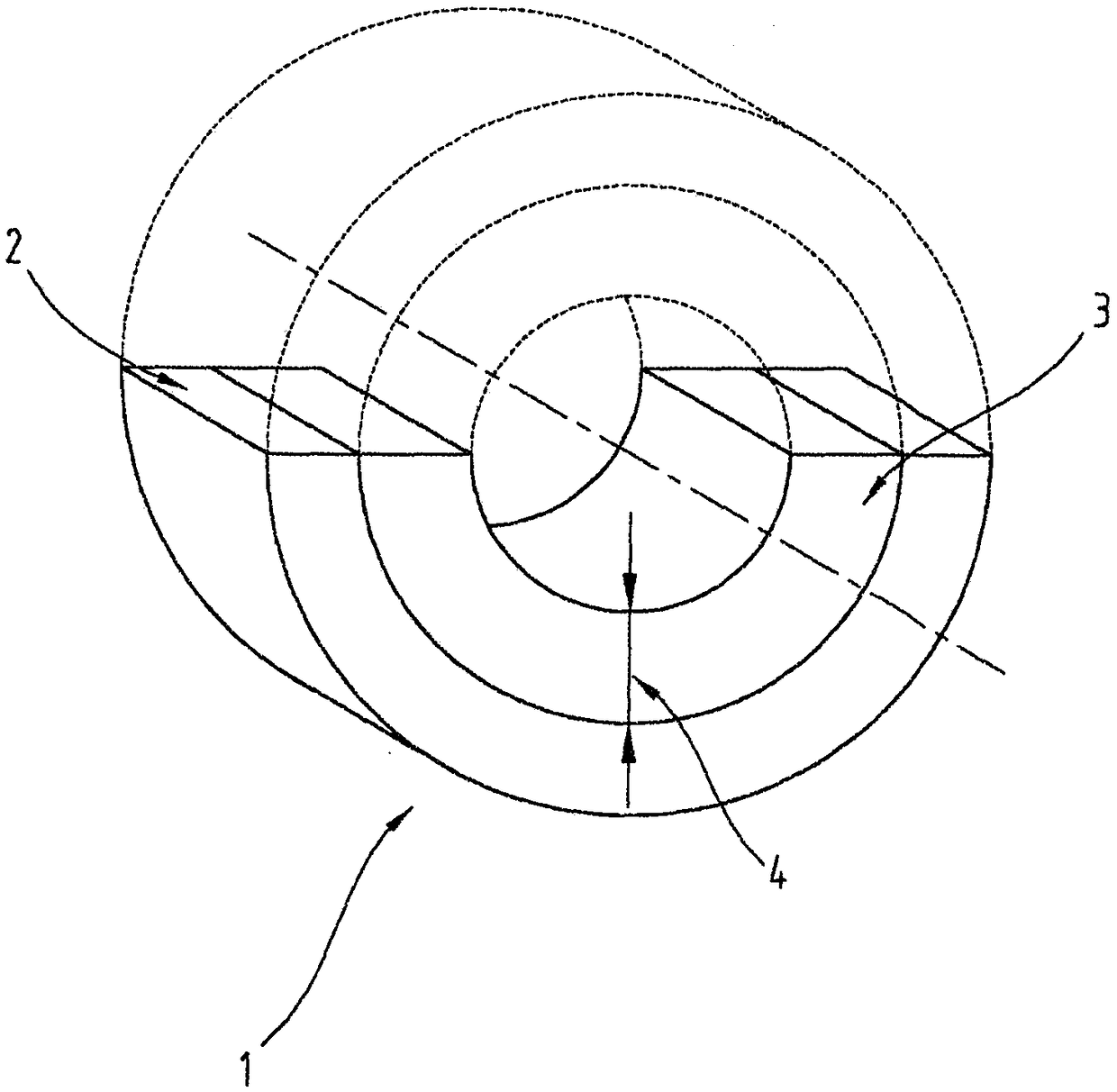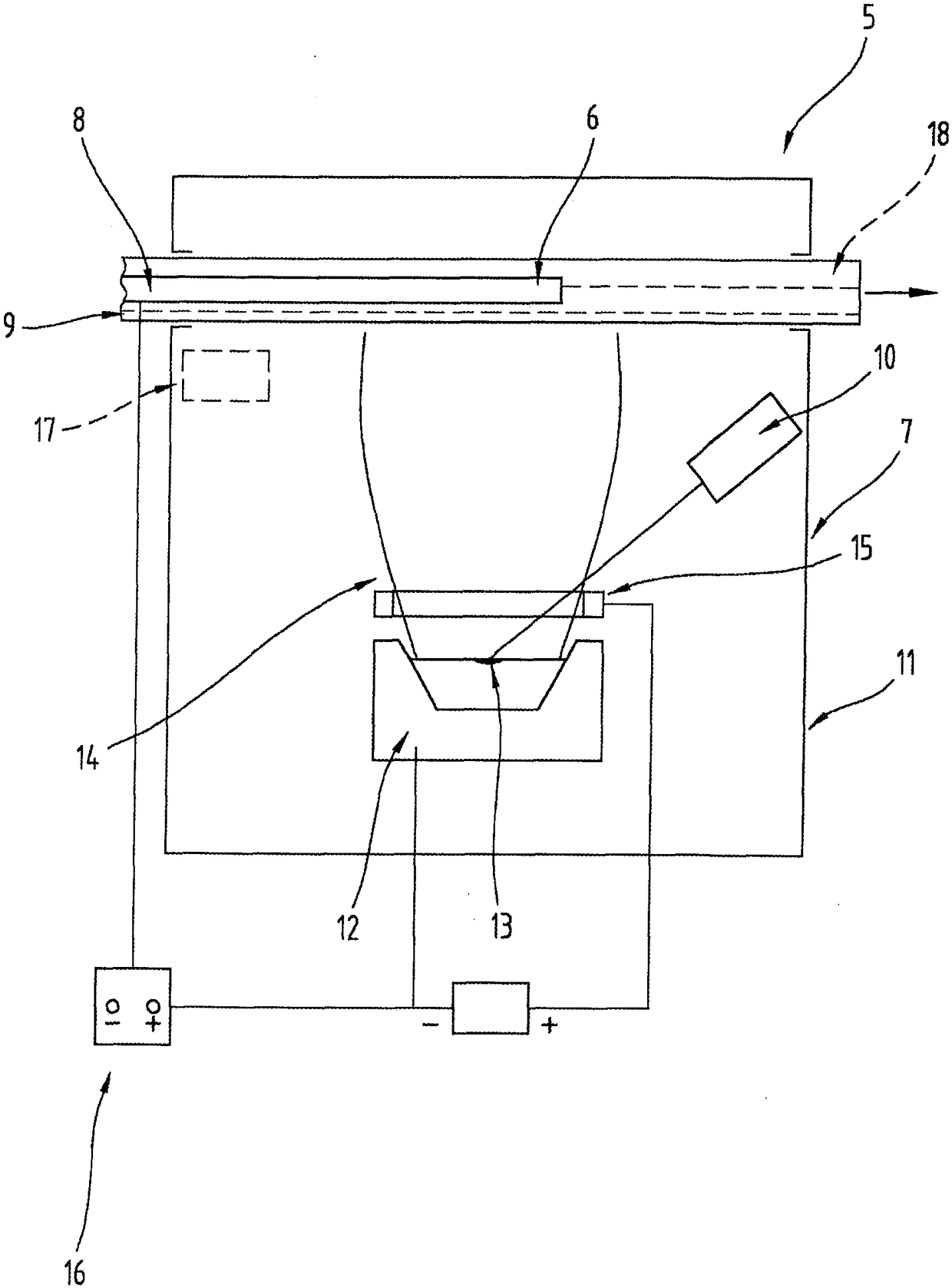Method for producing two-material sliding bearings
A sliding bearing, dual-material technology, applied in the direction of bearings, shafts and bearings, bearing components, etc., can solve the problems of expensive, low deposition rate, etc., and achieve adaptability, coating rate reduction, improved wear performance and friction performance Effect
- Summary
- Abstract
- Description
- Claims
- Application Information
AI Technical Summary
Problems solved by technology
Method used
Image
Examples
preparation example Construction
[0041] Thanks to the production method described in more detail below, the sliding layer 3 can be produced in such a way that the majority of the particles of the sliding layer 3, preferably all the particles (ie the first and the second particles) have at most 1 μm, in particular between 0.1 μm and 1 μm and the sliding layer 3 has a Vickers hardness of less than 100HV (0.025), in particular between 40HV (0.025) and 80HV (0.025).
[0042] Maximum particle size is understood here to mean the largest diameter that individual particles have due to their irregular shape. However, individual particles may be slightly larger than 1 μm depending on the preparation, however at least 90%, especially at least 95% of all particles have a particle size of at most 1 μm and the remaining particles have a maximum particle size of 1.5 μm.
[0043] According to a preferred embodiment variant it is proposed that the particle size of the second particles is at most half the particle size of the ...
Embodiment
[0082] Within the scope of the present invention, a bimaterial plain bearing 1 is produced which has a sliding layer 3 composed of AlSn20Cu on a support layer 2 composed of steel.
[0083] Pre-cleaning of steel substrates in plasma (p Ar ≈0.3Pa, P AEGD ≈3kW, U B ≈-1000V, t≈15 minutes).
[0084] With evaporation chamber 7 less than 2.10 -4 The initial pressure of Pa carries out the coating of the purified substrate 8 by using the AlSn14Cu5 alloy in the vessel 12 . The AlSn20Cu alloy is introduced into this vessel 12 during the deposition of the sliding layer 3. The distance between the substrate 8 and the container 12 was 300 mm. Substrate 8 in oil-cooled conveying device 9 (T 油,预备 =145°C) was transported through the evaporation chamber 7 . Use the following additional parameters for deposition:
[0085] Electron beam power: 100kW (thereby adjusting the surface temperature in the vessel 12 to about 1450°C)
[0086] Transport rate of substrate 8: 0.3mm / s
[0087] depos...
PUM
| Property | Measurement | Unit |
|---|---|---|
| thickness | aaaaa | aaaaa |
| thickness | aaaaa | aaaaa |
| Vickers hardness | aaaaa | aaaaa |
Abstract
Description
Claims
Application Information
 Login to View More
Login to View More - R&D
- Intellectual Property
- Life Sciences
- Materials
- Tech Scout
- Unparalleled Data Quality
- Higher Quality Content
- 60% Fewer Hallucinations
Browse by: Latest US Patents, China's latest patents, Technical Efficacy Thesaurus, Application Domain, Technology Topic, Popular Technical Reports.
© 2025 PatSnap. All rights reserved.Legal|Privacy policy|Modern Slavery Act Transparency Statement|Sitemap|About US| Contact US: help@patsnap.com


